When the switch was pulled at 5:29 a.m. Mountain War Time on July 16, 1945, to detonate the world’s first atomic bomb, that historic moment marked the first test conducted at White Sands Missile Range, New Mexico. It also heralded the vision statement that rings true some 75 years later: “Testing the Future, Changing the World.”
Since July 1945, dedicated professionals have gathered countless times at the vast and remote stretch of desert to conduct tests so no weapon is placed in the hands of a soldier, sailor, airman, Marine or Space Force Guardian until proven safe and effective. To this day, White Sands Missile Range team members remain vigilant and focused, fully aware that their efforts directly impact national security.
White Sands Missile Range, which is operated by the Army, is the largest fully instrumented, open-air test range in DoD, providing test support to the Army’s sister services, allies, coalition partners and defense technology innovators. White Sands encompasses 3,200 square miles (almost as large as Rhode Island and Delaware combined) of DoD-restricted airspace and can be expanded up to 7,569 contiguous square miles, making it the largest restricted DoD airspace in the country. If a test requires it, White Sands can temporarily grow bigger with a launch site at Fort Wingate, New Mexico, about 200 miles away.
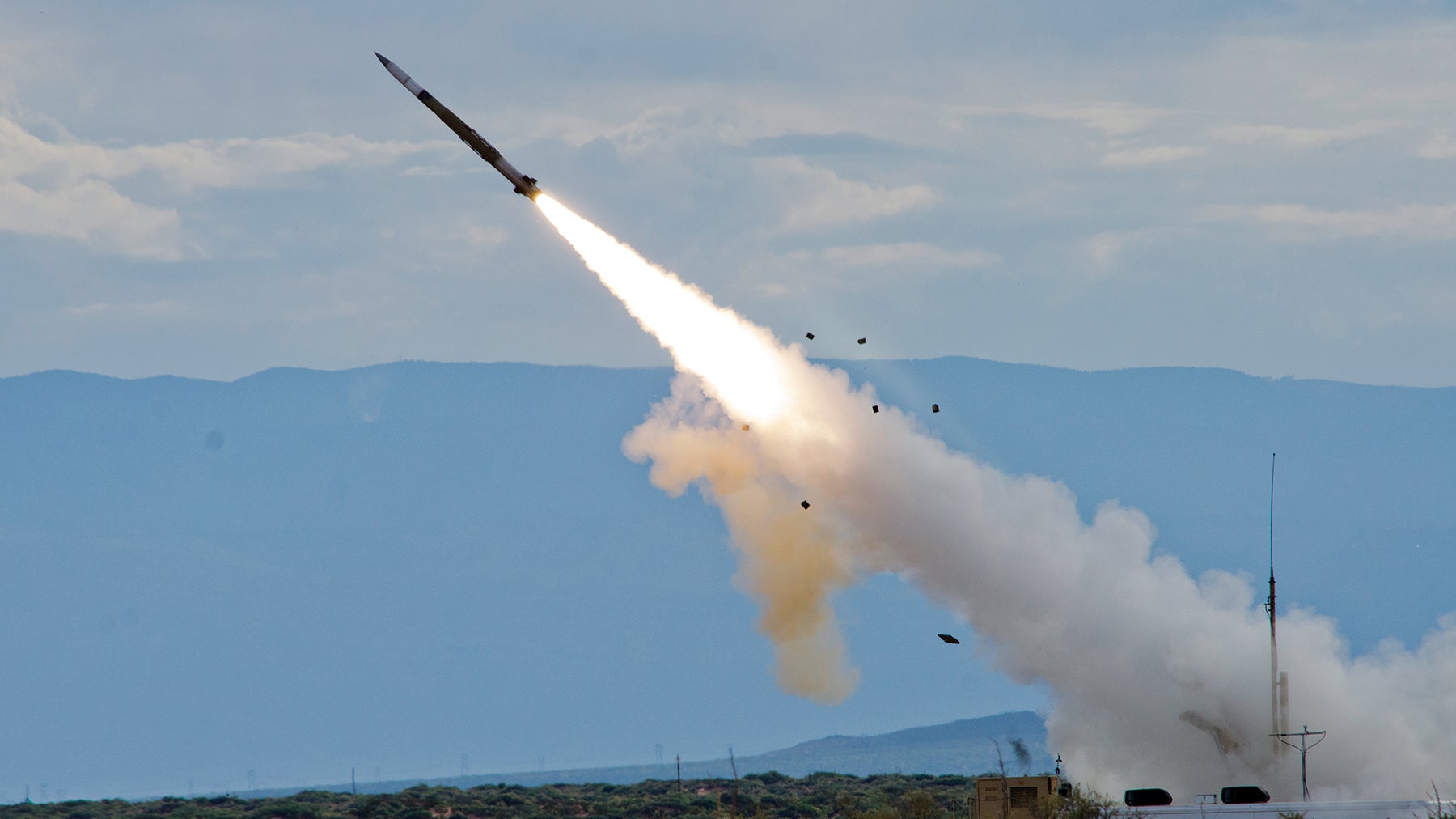
White Sands supports all facets of national security modernization, to include Army, Navy, Air Force and Space Force initiatives and testing requirements. White Sands is also the critical crossroads for the Army’s six modernization priorities: long-range precision fires, air and missile defense, the network, the Next-Generation Combat Vehicle, Future Vertical Lift and soldier lethality.
Here, we will explore three of those priorities more deeply:
Long-Range Precision Fires
Long-range precision fires is a collaborative effort between the Army and its sister services to deliver precision-strike dominance on land, sea, in the air and beyond. It ranges from hypersonic missiles with a range of more than 1,000 miles to the upgraded long-barrel howitzer known as Extended Range Cannon Artillery.
White Sands is helping these leap-ahead technologies as they transition from the science and technology community into the hands of operators such as field air defense artillery units by providing the capability to test, track and analyze their awesome speed, range and lethality.
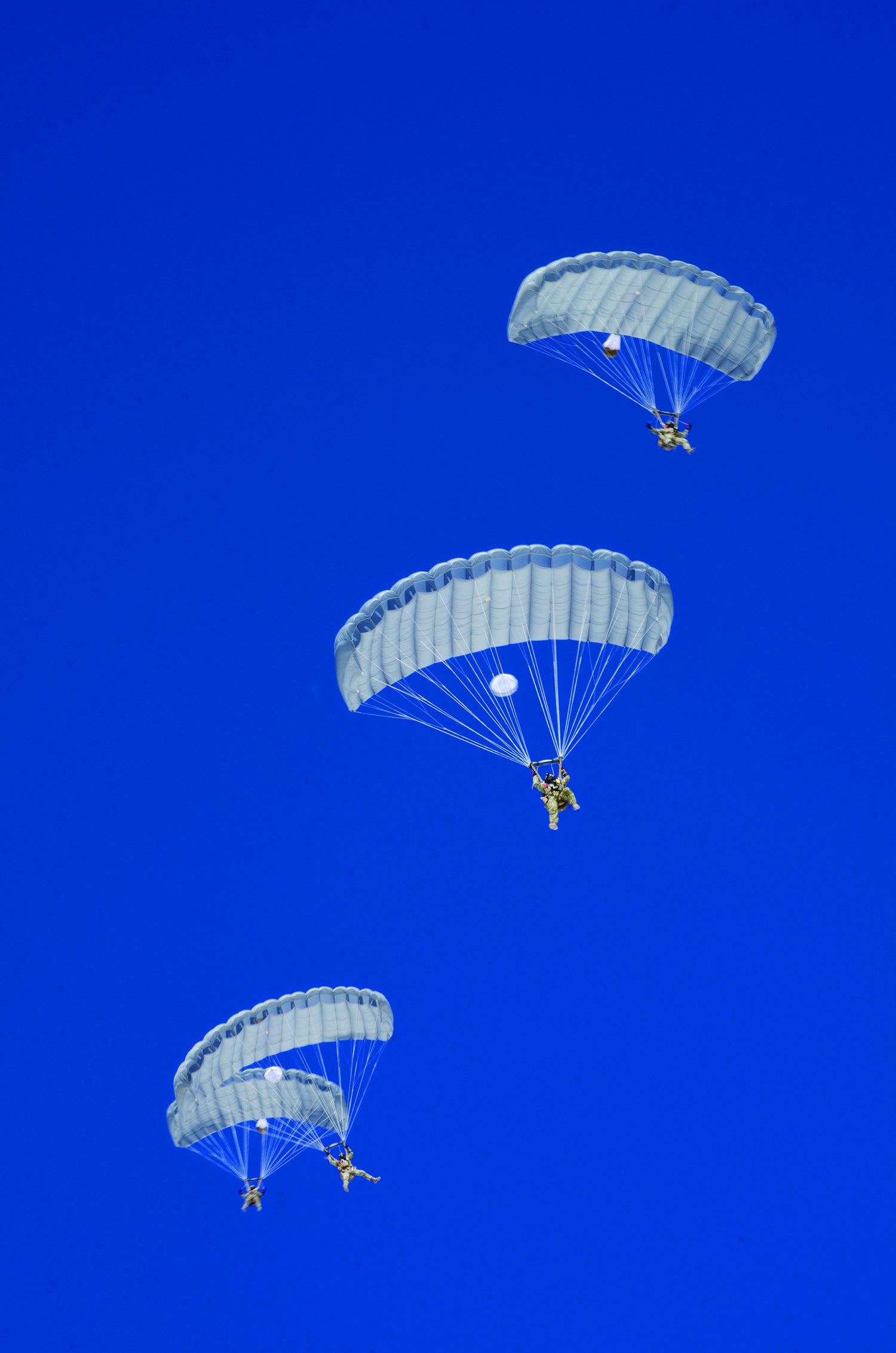
Air and Missile Defense
Another key modernization priority underway at White Sands is an ongoing effort to help pave the way for a future air and missile defense system that broadens and enhances the playing field.
Instead of selecting from among separate anti-air and missile defense systems such as the Patriot or Terminal High Altitude Area Defense, testing at White Sands is helping give the battlefield commander simultaneous and instant access to myriad anti-air and missile defense systems and their radar sensors all linked together, or, to put it simply, “Any sensor, right shooter.”
As with most major military technological changes and developments, it takes a small army of engineers and subject-matter experts to take a project like this from the drawing board to the battlefield. The soldiers assigned to the 3rd Battalion, 6th Air Defense Artillery Test Detachment, at White Sands are supported by a workforce of more than 6,500 highly skilled soldiers, civilians and contractor employees.
This homegrown core of workers is enhanced by strong ties with local colleges such as the University of Texas at El Paso, New Mexico State University, the University of New Mexico and the New Mexico Institute of Mining and Technology.
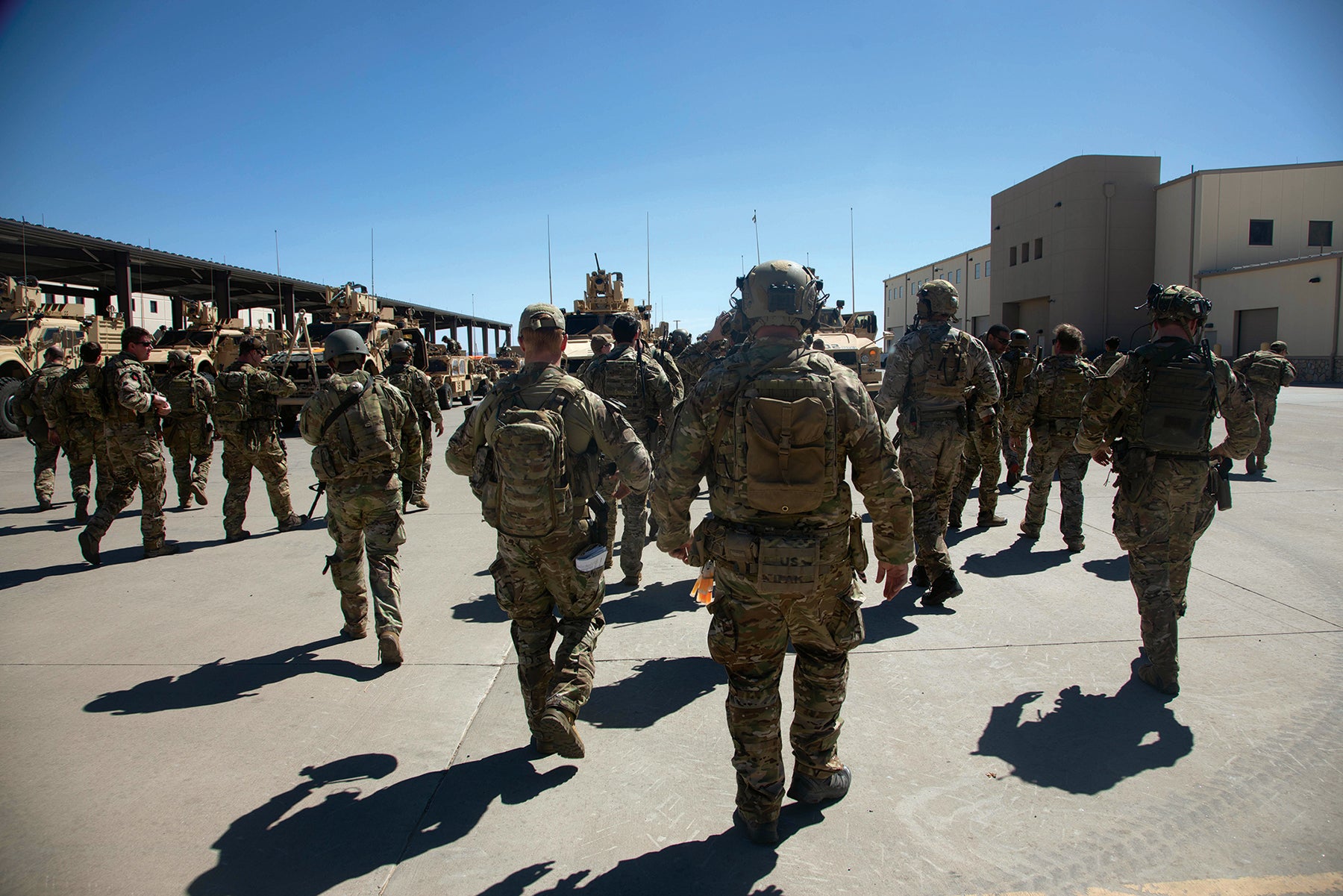
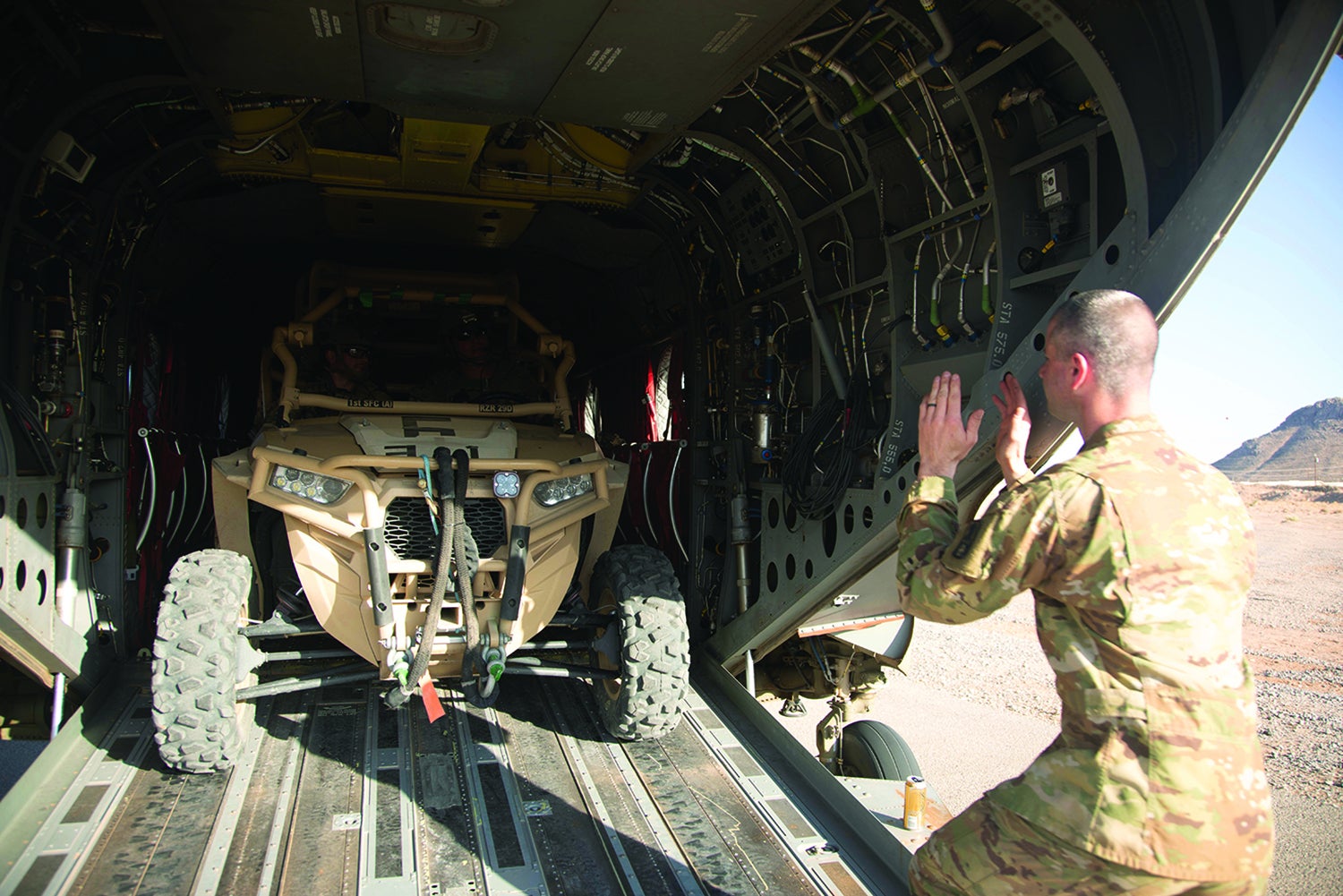
Directed Energy
Under the umbrella of Army Integrated Air and Missile Defense is development of directed-energy weapons, both in the form of high-energy lasers and high-powered microwaves. A directed-energy weapon damages its target with highly focused energy while reducing the logistics trail associated with conventional kinetic weapon systems. Potential applications of this technology include weapons that target personnel, missiles, vehicles and optical devices.
Leading the effort to test this emerging technology at White Sands is the High Energy Laser Systems Test Facility, which has already proven its effectiveness with tests of high-powered microwave and laser systems.
White Sands will continue its lead in testing directed-energy weapons to counter rapidly emerging foreign threats such as cruise missiles, counterdirected energy and unmanned aircraft system swarms.
Army Network
The Army’s network modernization efforts include a focus on assured position, navigation and timing. White Sands Missile Range’s size and scope make for a good fit for large-scale exercises such as Positioning, Navigation and Timing Assessment Exercises (PNTAXs) conducted at White Sands in 2019 and 2020. PNTAXs involve hundreds of soldiers and government and industry representatives who test emerging capabilities and technologies designed to counter attempts to disrupt the use of the GPS signal to shoot, move and communicate. PNTAX is scheduled to return to White Sands in October.
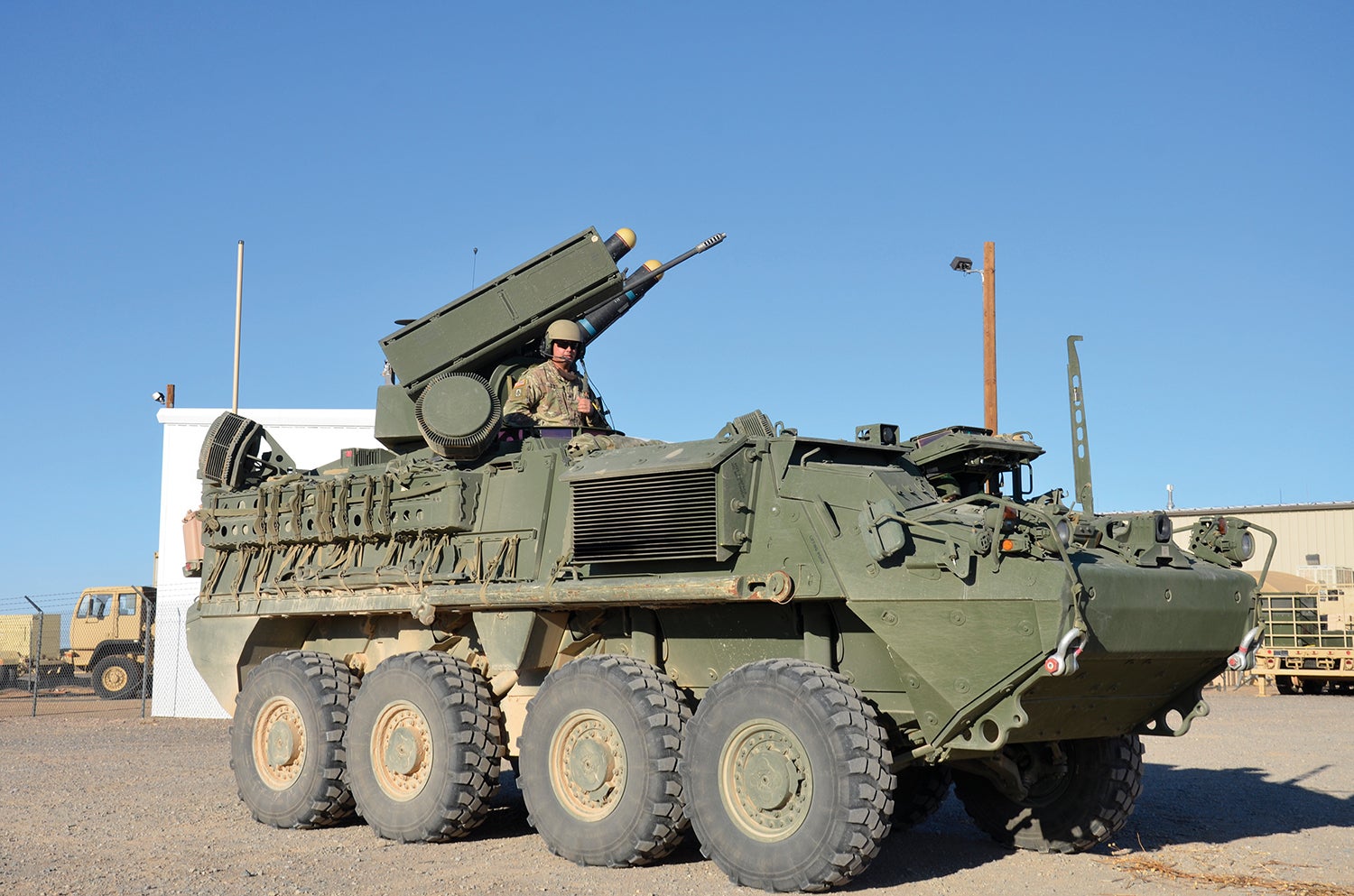
Navy Mission
The Navy has been part of the test community at White Sands Missile Range since 1946 when service representatives arrived to participate in research and testing of captured German V-2 rockets.
During the 1940s and 1950s, the Navy continued to launch rockets for atmospheric research and, in the 1950s, its responsibilities expanded from rocketry into the testing of surface-to-air missile defense systems. Its ongoing mission includes land-based testing of naval weapon systems missiles such as the electromagnetic rail gun at its iconic ship that sits in a sea of sand, the USS Desert Ship, also designated LLS-1, for Land Locked Ship No. 1.
Built in the 1950s to functionally duplicate the fire control requirements of a surface ship, Desert Ship was originally used to test the Talos missile. Now, it is primarily used for live-fire testing of the Navy’s Standard Missile. Desert Ship is one of two landlocked ships staffed by the Navy (the other is the USS Rancocas in New Jersey).
Air Force Testing
White Sands Missile Range and its nearby neighbor, Holloman Air Force Base, New Mexico, share a long history in the Tularosa Basin. That history dates back to the Trinity Site test when the range was known as White Sands Proving Ground and the Alamogordo Bombing and Gunnery Range.
Today, the 704th Test Group commander is responsible for all Air Force test events at White Sands Missile Range. The mission of the 704th is to operate world-class test facilities for guidance and navigation system testing, high-speed sled track testing, radar signature measurements, aircraft survivability testing, landing gear testing and weapons system flight testing, as well as test and evaluation liaison for Air Force research and development programs working with directed energy.
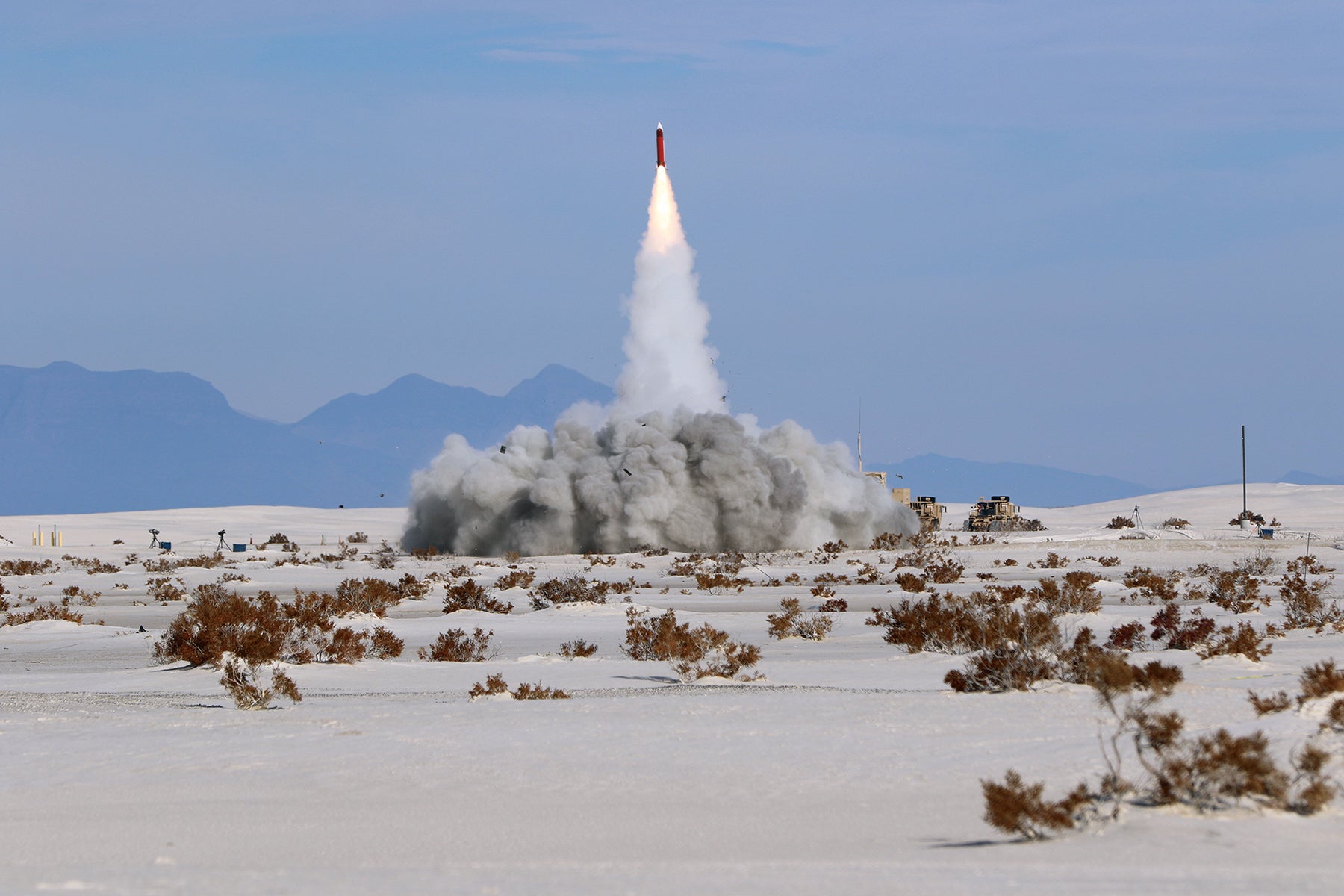
Space Activity
After some 75 years and more than 42,000 rocket and missile tests, White Sands Missile Range continues as one of America’s premier military test ranges, earning its title as the “Birthplace of America’s Missile and Space Activity.”
The origin of much of that history can be traced to the arrival in August 1945 of 300 rail cars filled with components of German V-2 rockets. The rockets were quickly put to work aiming for the stars. The first photographs and film showing the Earth’s curvature from space were taken from a V-2 rocket on Oct. 24, 1946.
On Feb. 24, 1949, a V-2 helped launch the first manmade object into space—a WAC Corporal rocket—and recorded the fastest speed of a manmade object at 5,150 mph. In other tests, devices were attached to V-2 rockets to sample air at all levels to determine atmospheric pressures and what gases were present, while other instruments were used to measure levels of cosmic radiation. What seems like common knowledge now was unknown at the time.
In addition to early rocket research, White Sands Missile Range was integral to the testing of the Apollo lunar missions. The facility also hosted the landing of the space shuttle Columbia in 1982. Today, White Sands Missile Range supports NASA’s commercial crew transport program, which works with American aerospace companies to develop and operate a new generation of spacecraft and launch systems capable of carrying crews to low-Earth orbit and to the International Space Station.
The tie to space at White Sands Missile Range is firmly entrenched, with long-standing NASA tenant organizations and now, an element of Space Force.
Team of Teams
White Sands Missile Range is an integral part of the U.S. Army Test and Evaluation Command and provides direct support to the U.S. Army Futures Command. At the same time, the Army installation is a de facto joint range. On any given day, a visitor could look around and think White Sands belongs to a combined command, seeing familiar uniforms from sister services, as well as less familiar faces from France, Germany, Japan, Korea, Poland or Britain participating in or observing a test.
White Sands Missile Range is a team of teams, home to elements from the Army, Navy, Air Force and Space Force, with each service having command, control and communication nodes on-site.
Other organizations at White Sands include NASA, the National Reconnaissance Office, the Defense Threat Reduction Agency, the Army’s Research and Analysis Center, the joint-service Center for Countermeasures, and the U.S. Army Combat Capabilities Development Command Data and Analysis Center and Army Research Laboratory.
Such a wide and varied network of teams is needed to achieve the more than 3,000 tests conducted annually at White Sands. Indeed, testing is why White Sands exists, and it takes such a team of teams to fulfill White Sands’ mission to test, prove and rapidly field weapon systems that allow the U.S. to deter and, if necessary, decisively defeat any adversary anytime, anyplace.
Extreme Testing
Testing at White Sands Missile Range is varied and extreme. We shake, rattle and roll a test item, roast it, freeze it, subject it to nuclear radiation, dip it in saltwater and roll it in the mud. We test its pain, bend its frame and find out what effect its propulsion material has on flora and fauna. In the end, if it’s a missile, we fire it, record its performance and bring back the pieces for examination. All test data is reduced and the customer receives a full report.
No place on earth can conduct vital, complex testing like White Sands Missile Range. We expect and demand excellence from ourselves because lives on the battlefield depend on us to ensure they are equipped with test-proven materiel and weaponry.
Could anything less be expected when you’re testing the future and changing the world?
* * *
Brig. Gen. David Trybula is deputy commanding general, U.S. Army Combat Capabilities Development Command, and senior commander, U.S. Army Natick Soldier Systems Center, Massachusetts. Previously, he was commanding general, White Sands Missile Range, New Mexico, and deputy commanding general for developmental testing, U.S. Army Test and Evaluation Command. He was commissioned as an armor officer and has served at the tactical, operational and strategic levels. He served two combat tours during Operation Desert Storm in Iraq and Operation Enduring Freedom in Afghanistan.
Command Sgt. Maj. Christopher Prosser is the command sergeant major for White Sands Missile Range. Previously, he was the sergeant major, Mission Command Center of Excellence, Fort Leavenworth, Kansas. He has served in heavy, light and Stryker units and has held leadership positions in armor, cavalry, infantry and Stryker units. His three combat tours included two tours during Operation Iraqi Freedom and one during Operation Enduring Freedom in Afghanistan. He also deployed to Kosovo for Operation Joint Guardian.

